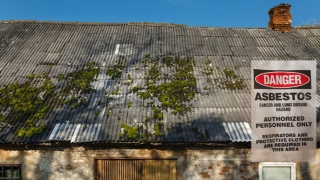
The key sectors of the construction industry in Australia play a vital role in shaping the nation’s economy, communities, and workforce. Spanning from residential housing to large-scale infrastructure, each sector offers unique opportunities and career pathways. With over 1.3 million people employed across various construction fields, understanding how the industry is structured helps clarify where demand lies — and what the future may hold.
This guide will help you:
- Understand the six main sectors of construction in Australia
- Explore opportunities in residential, commercial, and civil projects
- Learn what skills are in demand and where the industry is heading
🏠 1. Residential Construction
Where many start — and where Australians build their dreams.
What It Includes:
- Single homes, duplexes, townhouses, knock-down rebuilds
- Extensions, granny flats, kitchen and bathroom renovations
It’s the most accessible entry point in the industry and a great place to build foundational skills. The demand is strong, especially in growth suburbs and regional areas.
Residential construction contributes significantly to Australia’s housing supply, addressing affordability challenges and population growth. The Housing Industry Association (HIA) regularly reports on national trends and forecasts in this sector.
To work on construction sites, you’ll need a White Card — a legal requirement across Australia.
🏢 2. Commercial Construction
Where bigger projects meet bigger opportunities.
Think:
- Shopping centres, hospitals, universities, office towers
- Fit-outs for cafes, restaurants, franchises
Commercial jobs are often more structured, with detailed documentation, scheduling, and strict OH&S rules.
This sector tends to be heavily influenced by business confidence, government spending, and the commercial leasing market. Innovations in commercial construction now include prefabrication and modular building techniques to speed up delivery and reduce waste.
🎣 3. Civil & Infrastructure Construction
Build what moves Australia.
This is the sector behind:
- Roads, bridges, tunnels, and drainage
- Railways, airports, ports, and public spaces
Driven by large-scale funding, civil construction is booming. According to Infrastructure Australia, there are billions in ongoing infrastructure projects, with skills shortages in key areas like civil site supervision and safety management.
Civil construction is often supported by federal and state government budgets, and it plays a crucial role in national productivity and regional development.
Civil work often offers full-time positions with structured career paths and great pay.
🏭 4. Industrial Construction
Specialised, technical, and critical to national infrastructure.
Projects include:
- Warehouses, storage plants, data centres
- Energy facilities, recycling plants, and production lines
Industrial construction requires coordination between construction and engineering teams to meet complex regulations and operational standards. With the growth of e-commerce and renewable energy, this sector continues to evolve rapidly.
Australia’s push for net-zero emissions has increased demand for industrial construction projects that support solar farms, wind farms, and hydrogen plants.
🛠️ 5. Specialised Construction Services
The skilled trades that keep everything running smoothly.
This includes:
- Waterproofers, renderers, tilers, and finishers
- Electricians, plumbers, and HVAC technicians
- Joinery, glazing, concrete polishing
This sector supports every other one — and offers endless opportunities for skilled tradespeople who want to run their own business or subcontract.
There is strong demand for licensed trades, with the National Skills Commission reporting shortages in areas like plumbing, electrical, and tiling.
♻️ 6. Renovation, Maintenance & Retrofitting
Green building, disability retrofits, and future-ready upgrades.
This booming area focuses on:
- Sustainability and energy-efficient upgrades
- Restoring older buildings or adapting for accessibility
- Smart home systems and insulation improvements
Australia’s growing interest in sustainability and home automation is fuelling this sector. Incentives such as the HomeBuilder grant and energy efficiency schemes have helped drive renovation demand in recent years.
🧱 Additional Sector: Modular & Prefabricated Construction
Modular and prefabricated building is a growing niche in Australia. Projects are built off-site in sections and assembled quickly on-site, reducing waste, timelines, and labour costs.
Modular builds are especially popular in:
- Remote and regional areas
- Schools and healthcare facilities
- Emergency housing and mining camps
This innovation is supported by advancements in design technology like BIM (Building Information Modelling).
What Skills Are In Demand?
- Project and site management
- Reading plans and applying building codes
- Budgeting and scheduling
- Team coordination and WHS compliance
- Communication with clients and trades
- Green building knowledge and digital construction tools (e.g. BIM)
Ready to Explore Further?
Stay up to date with industry trends, tools, and career pathways in construction. Follow updates from reputable industry bodies and subscribe to relevant platforms that help you stay informed and skilled in a changing construction landscape.






